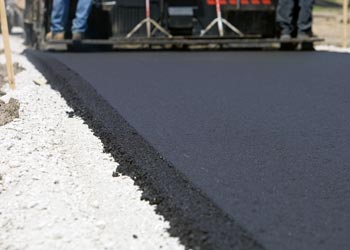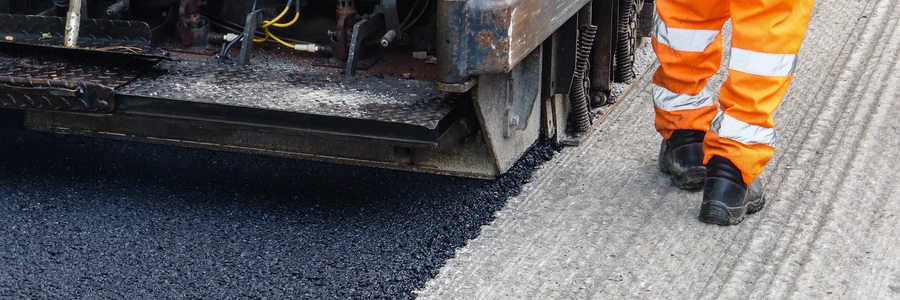Get This Report about A1 Professional Asphalt & Sealing Llc
Get This Report about A1 Professional Asphalt & Sealing Llc
Blog Article
The Single Strategy To Use For A1 Professional Asphalt & Sealing Llc
Table of Contents3 Easy Facts About A1 Professional Asphalt & Sealing Llc ShownSome Known Incorrect Statements About A1 Professional Asphalt & Sealing Llc The Only Guide to A1 Professional Asphalt & Sealing LlcIndicators on A1 Professional Asphalt & Sealing Llc You Should KnowSee This Report about A1 Professional Asphalt & Sealing Llc

The oil in an automobile engine is not simply oil. It includes a range of ingredients to enhance the automobile's efficiency. These include polymers, viscosity modifiers, heat stabilizers, added lubricants, and wear ingredients. The REOB includes all the ingredients that remained in the waste oil as well as the wear steels from the engine (mostly iron and copper).
However, by making many blends utilizing various REOB examples and different asphalt binders, the variants mainly can be averaged out. Several States offered samples of known REOB structure to TFHRC researchers, that analyzed the samples to compare the percent of added (understood) REOB to the discovered (checked) quantity. The evaluations showed an equivalent percent of added and discovered REOB.
A1 Professional Asphalt & Sealing Llc - An Overview
They received a frustrating action. The TFHRC scientists assessed 1,532 samples from 40 States, one Canadian province, and two Government Lands Highway divisions. They assessed each example twiceamounting to greater than 3,000 evaluations. None of those States realized that the asphalt they were acquiring had REOB. One State urged its examples had no REOB.
Of the 1,532 samples tested, 12 percent contained REOB, and some consisted of significantly high degrees of it at 1020 percent. The highest degree was 34 percent in a sample from Texas, which TxDOT had made use of in a patching compound. This testing additionally disclosed the existence of phosphoric acid in 11 percent of the examples, and 2 percent contained ground tire rubber.
2 years back at TRB's annual meeting, the Federal researchers held an REOB workshop and presented the searchings for of their research laboratory examinations to a standing room-only crowd. Although some agencies do not particularly ban REOB, they do enforce physical tests that preclude its useeffectively a ban. a1 professional. Others do not outlaw it by requirements, however have agreements with asphalt distributors to prevent making use of REOB
Some Known Facts About A1 Professional Asphalt & Sealing Llc.
A handful do permit REOB, some within particular limitations. For instance, Ohio and Texas limit levels to much less than 5 percent of the asphalt. To develop a reliable test method that all States can use, the TFHRC researchers set up a round-robin examination strategy. The individuals are 11 State highway agencies (Illinois, Massachusetts, Minnesota, Mississippi, Montana, North Carolina, Oklahoma, South Carolina, Texas, Vermont, and Wyoming), 2 independent testing labs, the Ministry of Transport in Ontario, Queen's University in Ontario, and an Ontario paving professional.
In total amount, the scientists prepared and delivered 720 blends. The participants are examining the examples individually utilizing the standards provided by the TFHRC scientists. The round-robin screening is nearly finished, and TFHRC is in the process of accumulating the outcomes. The outcome will be a suggested AASHTO test method that any type of State can adopt and use (cold mix vs hot mix asphalt).
The pavement with REOB, which is situated 0.6 mile (1 kilometer) from the pavement without REOB, has identical subgrade, website traffic thickness, and environment. However, the section of Highway655 with 5 to 10 percent REOB showed significant fracturing. In this instance, the existence of REOB was the identified reason for splitting at a reduced temperature levels.
"In our experience in Canada, even small amounts of 23 percent can be a trouble." Likewise, an area of test sidewalk in Minnesota (MN1-4) located to include REOB additionally broke prematurely. The sidewalk executed well for the very first 3 to 4 years, yet then began to break. This sidewalk is additionally based on reduced temperature levels.
What Does A1 Professional Asphalt & Sealing Llc Do?
The examinations were not extensive, but they showed that at levels of 6 percent or even more, the tensile stamina of the asphalt dropped substantially. At a degree of 3.5 percent REOB, the variation in the physical examination techniques was better than the result of REOB. In reality, it was hard for scientists to analyze whether REOB existed.

One binder criterion thought about is the difference between the low temperature level essential requirements temperature level for stiffness (S) in the flexing beam of light rheometer and the bending beam rheometer creep incline (m-value) noted as Tcritical. 2 independent study groups, one from AASHTO and the other from the Asphalt Institute, ended that more study is needed on the usage of REOB in asphalt.
Formerly, all asphalt screening gauged engineering residential properties such as tightness. These tests do not reveal what products had been included to the asphalt.

The Buzz on A1 Professional Asphalt & Sealing Llc
These results demonstrate there are weaknesses in the standardized design screening protocols that may be exploited. The manufacturer might have a financial advantage and the product passes all the standardized tests, but the item may not be helpful to making sure long-lasting efficiency. To resolve this problem and the expansion of brand-new asphalt additives and extenders, TFHRC is starting a study program to utilize handheld spectroscopic devices, see post x-ray fluorescence spectroscopy, and Fourier change infrared spectroscopy to enable analyses to be done in the area instead than needing to take samples back to the laboratory.
Report this page